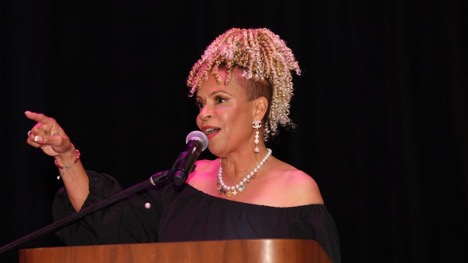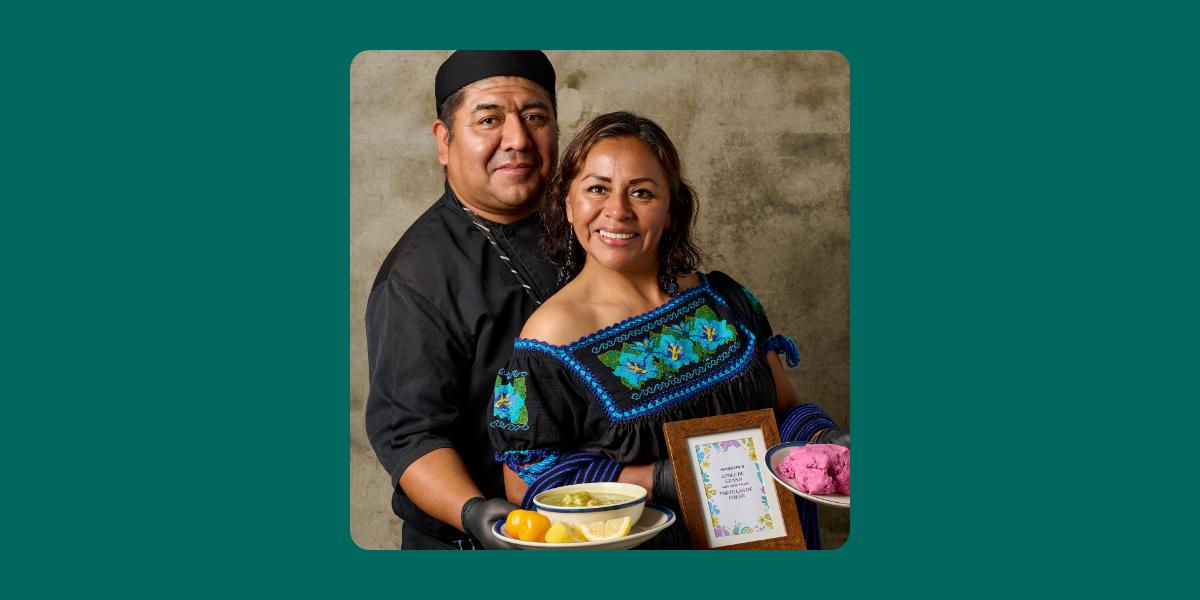Pictured above: Donna DeBerry speaks at the County of San Diego Black Chamber of Commerce Gala on Oct. 20, 2023, at the Marriott Marquis in San Diego, California. (Courtesy of the County of San Diego Black Chamber of Commerce)
DeBerry is president of the San Diego Black Chamber of Commerce and lives in San Diego.
My feelings about Black History Month are complicated. On one hand, I deeply appreciate the time to intentionally celebrate the brilliant contributions to American culture and history by people who look like me. There is nothing so motivating and inspiring as knowing that people who look like me achieved great things.
But while absolutely worthy of celebration, the stories of African American contributions to our society have become repetitive over the years. On the surface, Black History Month may appear to be a good way to honor Americans — like me — who are of African descent. However, there is still much work to be done before we can celebrate a true victory against systemic racism.
In October 2023, the San Diego Foundation and San Diego Regional Policy & Innovation Center published a report detailing economic equity in San Diego County, and found that Black San Diegans unequivocally face the brunt of economic, health and housing inequity.
As the president of the County of San Diego Black Chamber of Commerce, I know firsthand that people of color in San Diego have faced obstacles and barriers that our White neighbors have not. Each day, the Black Chamber works to uplift business owners of color by providing resources, education and funding to support their entrepreneurship. It’s clear that, despite the successes that we’ve seen over the years, there’s still plenty more work to be done.
The San Diego Foundation’s report just quantified the amount of inequity in San Diego. Let’s look at the data: 38 percent of all San Diegans and more than half of Black San Diegans spend more than 30 percent of their household income on housing alone.
Black students are twice as likely to be unhoused as their White classmates. Black San Diegans are twice as likely to have no health insurance as White San Diegans. The Black incarceration rate was six to seven times greater than the White incarceration rate. Black or African American San Diegans are about twice as likely to be without high-speed internet access at home as White San Diegans.
The average White San Diegan is expected to live five years longer than the average Black San Diegan. Black or African American residents lived in poverty at more than twice the rate of White San Diegans. Black children living in San Diego were 2.5 times more likely to be living in poverty than White children.
As a point of reference, the poverty line for a family of four in 2023 was an annual household income below $24,860. That’s around $2,072 a month — far below the average rent in San Diego last year. And that’s not even including food, gas or other everyday expenses. I read these numbers, and they make me incredibly sad, especially because these aren’t just numbers on a graph — each one is a person. Celebrating Black History Month with the same repetitive gestures just doesn’t feel right this year — not unless we can do something about it.
We must invest in the ability for people of color in San Diego to build businesses, achieve health and economic equity, and create wealth for generations to come. The status quo, as the San Diego Foundation’s report made clear, is not sustainable for our communities. The report is not the end of the story of inequality in San Diego. In fact, it should be the beginning of a push to correct these inequities and create a city and county in which all residents can thrive.
To start, we need to understand that the inequity in San Diego is the direct result of years of racism, system injustice and discriminatory policies. Historically, people of color have not had the same opportunities for generational wealth and economic advancement. Understanding the history is just part one. As the San Diego Foundation points out in the report, we must use this data as a starting point to understand where the needs are in our county and where we must target investments. We must also support policies and programs that can help lift Black San Diegans and people of color out of poverty and allow them to build generational wealth.
Our Urban Business Resource Center is one such program, and provides access to education, resources and mentorships to businesses owned by people of color. By supporting these businesses, we can help underrepresented and marginalized entrepreneurs build generational wealth, achieve stable housing and homeownership, and chart a new future for marginalized communities in our state.
The Urban Business Resource Center is not the only program in San Diego aimed at reducing income inequality, however. I urge city leaders to educate themselves on organizations doing the real work to address poverty, disparities and racism in our community. The County of San Diego Black Chamber of Commerce will celebrate with city and county authorities when we see systemic racism, barriers and roadblocks for Blacks acknowledged and eradicated, and a new paradigm presented to close the wealth gap in this county.
Let’s recognize, acknowledge and support Black leaders, organizations and communities by contributing tools, resources and opportunities all year long — not just during the month of February. As a county and a city, we have the power to band together and do better. I know we must do better.
This article originally appeared in The San Diego Union-Tribune.




